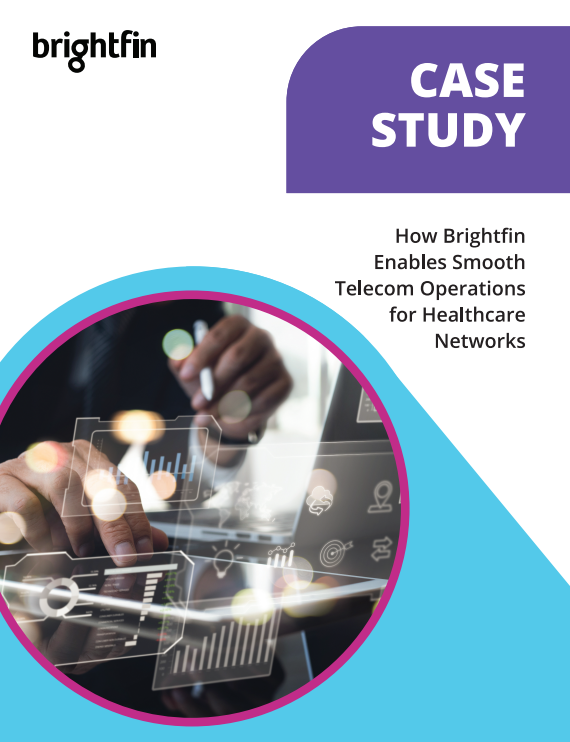The Telecom Expense Management Industry Faces an Uncertain Future
It feels like the Telecom Expense Management (TEM) market is under duress! Recent breaking news revealed the current market leader has an uncertain future and there are two offers for purchases from investment companies that are heavily invested in TEM. Blue Hill Research analyst Charlotte O’Donnelly stated “At Blue Hill, we will continue to keep our eye on… the TEM market, which may be facing some serious disruption going forward based on the uncertain future of its market leader.
Following the recent news, there is strife and uncertainty in the TEM marketplace. So what’s going on? Is TEM even necessary in a digitalized world? The matter of fact is that organizations need to track these expenses, but in all reality, they are only the tip of the iceberg, aren’t companies aiming to provide telecom and cloud services as autonomous, self-service solutions?
Traditional TEMs core function is reducing expenses by beating up the carriers and outsourcing select telecom work. Each one has created their own unique platform that promises to help reduce expenses. These platforms are predominantly siloed and have to be integrated with ERP, HR, EMM, finance, and other IT systems. The result of which is long implementation times, complex data reconciliations and high operational costs to maintain, update, configure, secure and ensure interoperability.
Telecommunications Should be Managed as a Service
Isn’t managing telecom all about managing services such as: changes, incidents, inventories and finances instead of managing telecom as just an expense? It’s time for companies to break away from the constraints of legacy Telecom Expense Management solutions and start managing telecom as a service! With the proliferation of telecom services with IoT devices and the increased use of SaaS solutions, telecom services MUST be managed as an integral function within the IT service management platform. This completely eliminates the need to operate an isolated TEM solution, and that’s exactly what brightfin does on the ServiceNow platform.
brightfin seamlessly integrates provider portals and enterprise mobility management solutions with ServiceNow where they can communicate with other integrated systems such as human resources, finance and enterprise resource planning. Every aspect of TEM can now be performed from within one central location in ServiceNow.
Since all service management infrastructures are already built in ServiceNow, companies can migrate from a traditional TEM or implement a new solution quickly and in less than 90 days. Asset information is stored on the ServiceNow CMDB, incidents can be handled through the IT portals, customizable workflows and business rules can automate work and the whole organization becomes more productive by working within a single system.
So ask yourself the question, why do I need a standalone TEM tool, when I can achieve more with my ServiceNow investment?
Telecom Services Management (TSM) completely transforms the way telecom work is done. Manual tasks and processes are automated using graphical workflows and business rules. Roaming management changes from a time-consuming, high touch process to an automated, no-touch solution. Powerful self-service enables end users to request service changes, report incidents, view usage and take EMM actions. With TSM, results are focused on creating an amazing user experience for everyone in the organization. End users get intuitive, consumerized portals where they can easily make requests and analysts no longer have to swivel chair between multiple systems. Actionable analytics bring problems to the surface and allows for swift changes to be made. The end result of TSM is lower organizational costs.
Understanding the Total Cost of Telecom Ownership
According to a recent report by Gartner, they estimated the Total Cost of Ownership (TCO) for a mobile device per year is approximately $1900. Of which, only 43 percent is actually related to telecom provider costs. The other 57 percent is spent on managing telecom services. If we relate these percentages to telecom management as a whole, there are more opportunities to save money with operational efficiencies than from provider costs. When you combine both, there is no question that TSM provides customers with the absolute best value in the marketplace and has proven to do so on a continual basis.
Siemens is a great example of a brightfin customer that has embraced TSM and has seen amazing results. Dr. Matthias Egelhaaf, Program Director at Siemens AG stated in a case study written by ServiceNow, “brightfin and ServiceNow have given us complete mobile transparency, allowing us to streamline internal tasks and shut down several legacy systems to substantially reduce operating costs.” The Siemens TSM solution was implemented and generating value in less than three months and serves over 160,000 lines that span across the globe.



